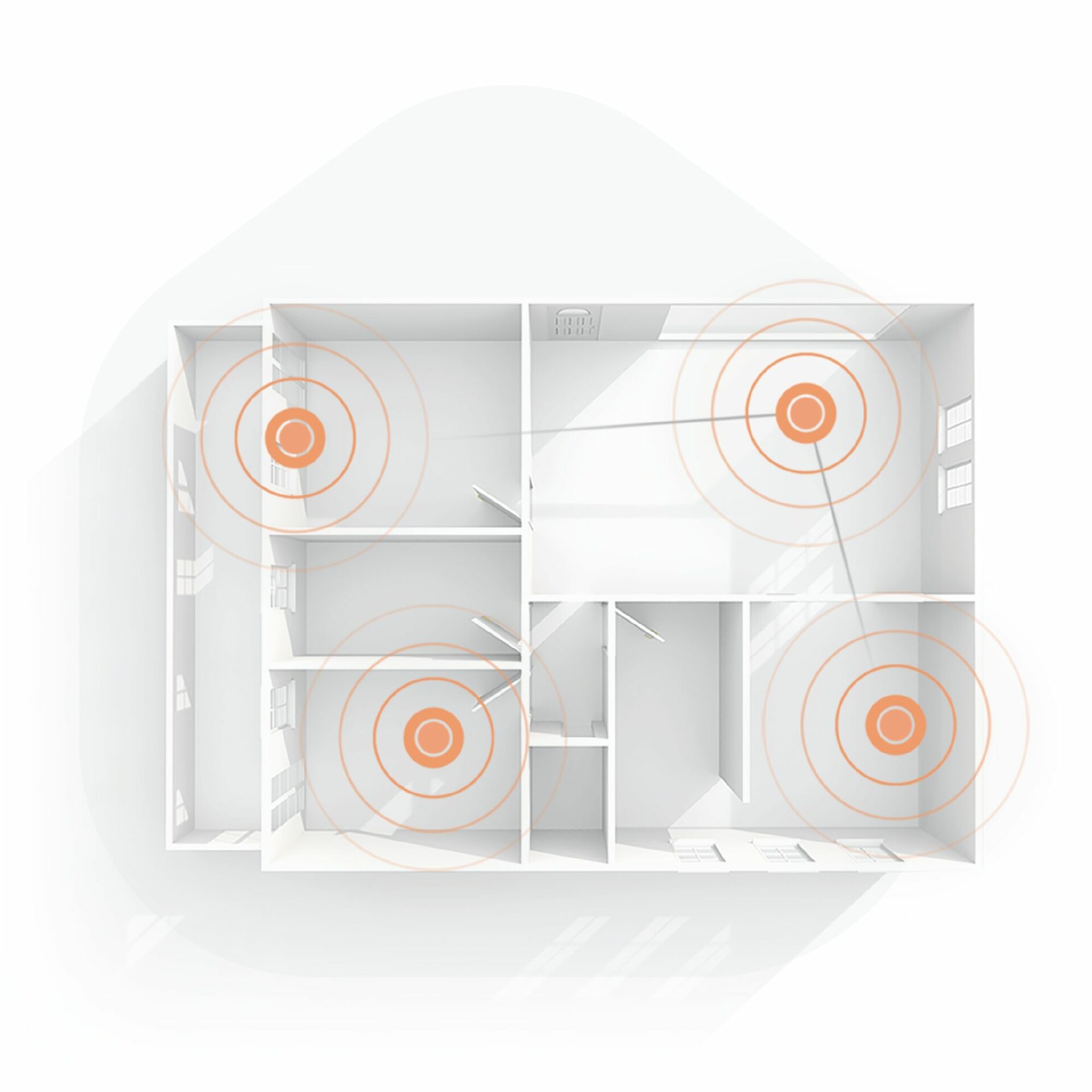Are you a
Homeowner?Are you a
Homeowner?
Fire safety is one of the key sections within the Building Regulations, which outlines the requirements needed to provide an early warning of fire, escape routes, preventing the spread of fire, and providing access to firefighting facilities for the Fire and Rescue Services.
Fire Building Regulations in the UK point towards BS 5839 as they key code of practice for the planning, design, installation, commissioning and maintenance of fire detection. (BS 5836-6 for domestic, and BS5839-1 for non domestic).
BS 5839-6:2019 categorises different grades and categories of fire detection systems for different types of building. Part 6 of BS 5839, outlines the code of practice for the design, installation, commissioning and maintenance of fire detection and fire alarm systems in domestic properties. Generally, the greater the fire risk and the more demanding the application required, the more comprehensive the fire safety system needs to be.
Here is a quick overview for specifying a fire detection and fire alarm system:
For further detail on system grading for fire detection and fire alarm systems, click here.
For further detail on categories for fire detection and fire alarm systems, click here.
Building Regulations vary throughout the UK, and so specify different levels of fire safety when installing fire alarm systems. Please refer to our standards and regulations section within the Professional knowledge base for latest guidance.
All latest Building Regulations recommend:
As fire safety technology continues to advance, multi-sensor alarms (those monitoring for more than one indication of fire e.g. smoke and heat) are becoming increasingly available and affordable. These provide a quicker, more reliable, response to fire – so giving occupants more time to escape – and also reduce the risks of false alarms.
Locations of smoke and heat alarms must be compliant with either BS 5839:6 or relevant Building Regulations if in any doubt. Our smoke and heat alarms are not intended for any non-residential, commercial or industrial application, nor for any other purpose other than described in the above. For the maximum protection, we recommend you fit to meet LD1 category standards, which includes a heat alarms. Latest standards and UK Fire and Rescuse services strongly advise that a heat alarm is always installed in a kitchen as part of a complete fire protection system that includes smoke alarms.
Smoke Alarms should be fitted in all rooms especially principal habitable rooms where the temperature is normally between 4°C (40°F) and 38°C (100°F). Smoke alarms can be fitted in hallway, landing, living room(s), bedroom, airing/meter cupboards.
Heat alarms are best suited to areas where dust, fumes and moisture can cause nuisance alarms in smoke alarms. Designed for use in for a kitchen, laundry/boiler room, loft, garage.
The latest British Standards recommend that smoke and heat alarms are installed:
Some additional do’s and don’ts for when positioning smoke and heat alarms:
Do’s – make sure you:
Don’ts – make sure you:
CARBON MONOXIDE ALARM POSITIONING
The British Standard EN 50292 standard recommends that a CO alarm should be installed:
Recommended: In all rooms with fuel burning appliance, e.g kitchens, living rooms, bedrooms.
The standard also recommends that CO alarms should not be installed:
If you can't find what your looking for on our blogs and looking for further guidance and advice, our UK-based Customer Support team are on hand all week from 8:30am until 5:30pm, they can answer any further queries you may have on our products, solutions or services.